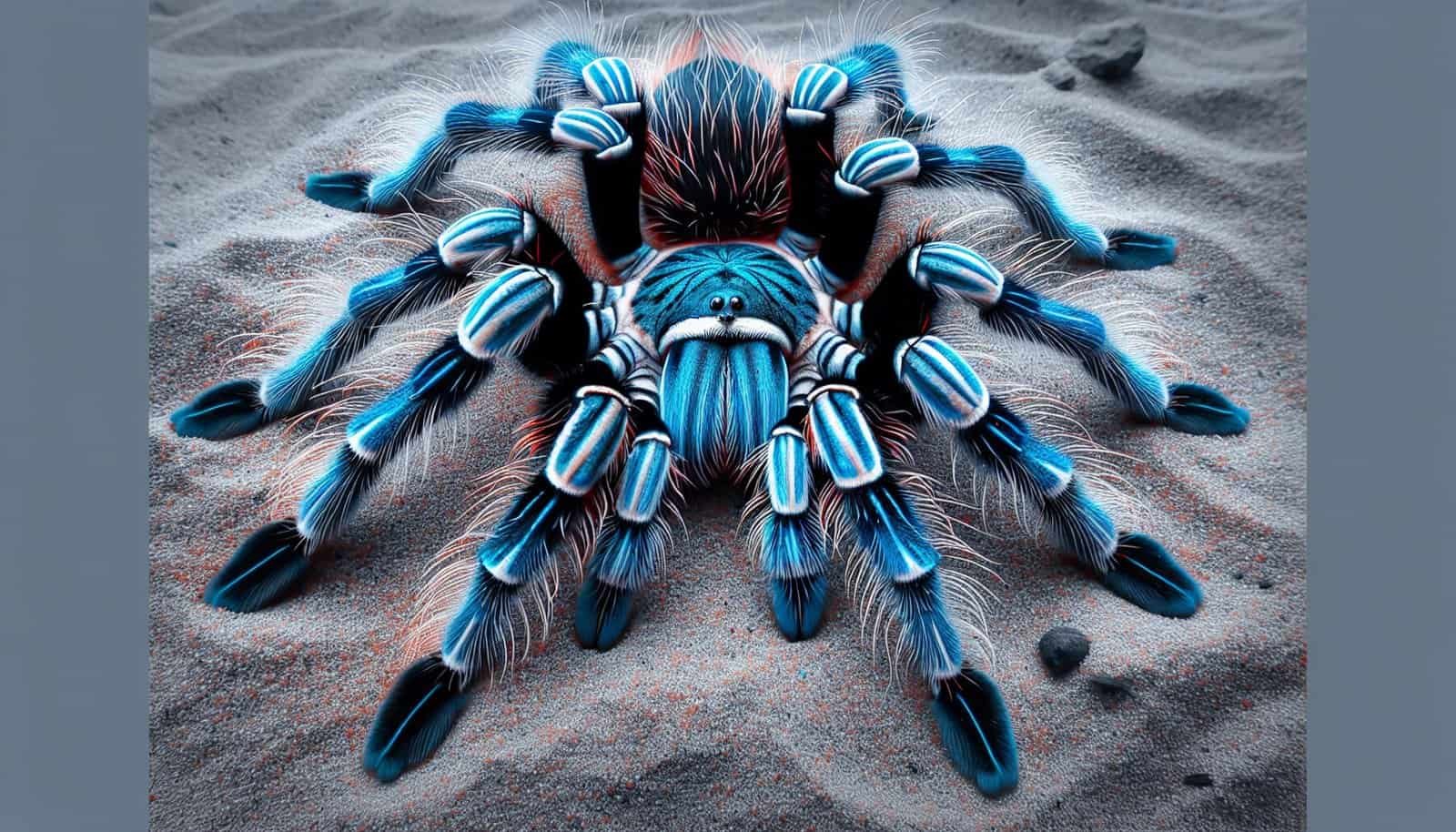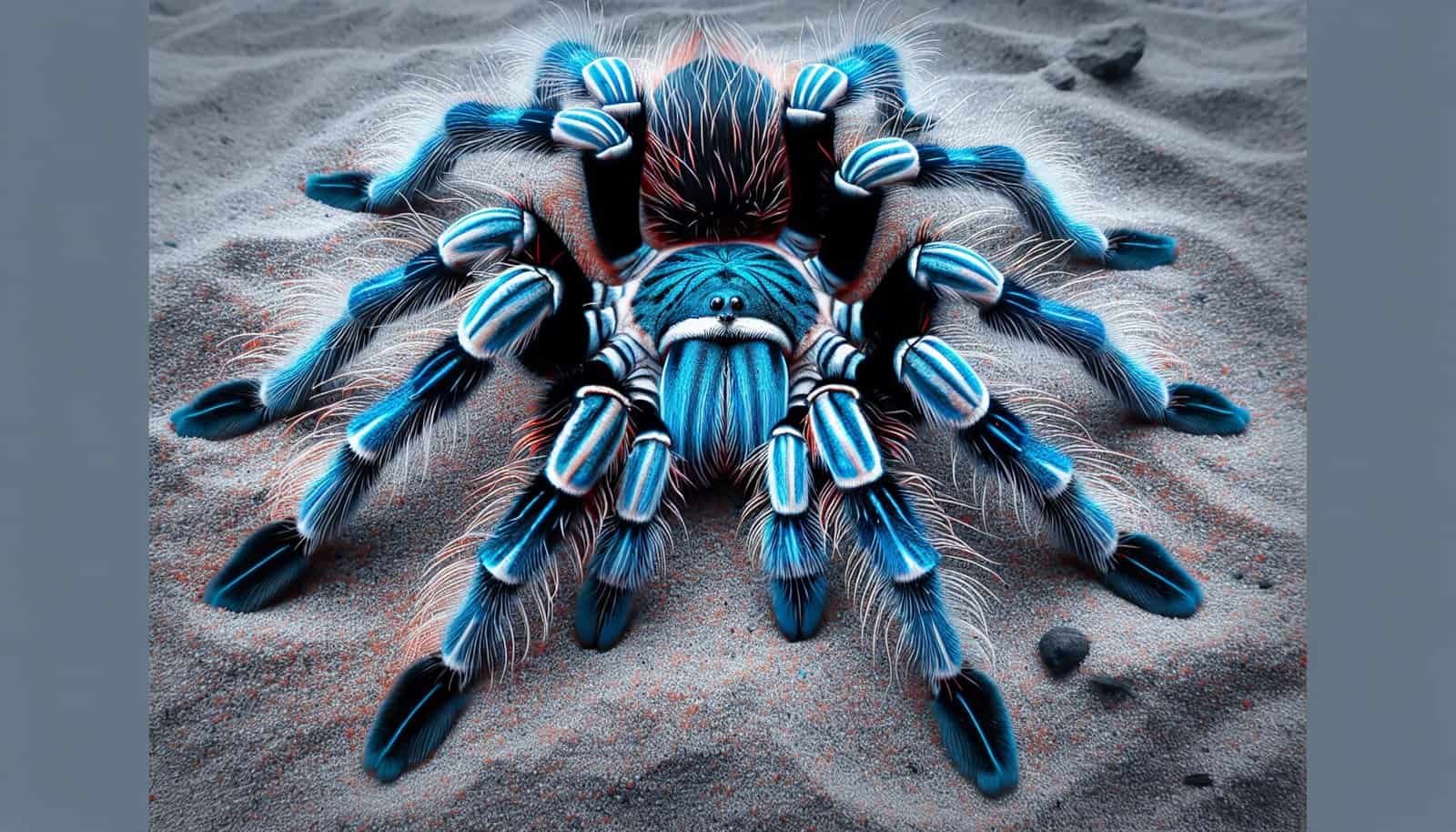Imagine encountering a creature so rare and coveted that it piques the curiosity of even the most seasoned arachnid enthusiasts. If you have heard whispers of the Socotra Island blue baboon tarantula, then you are no stranger to the allure of this extraordinary spider. But what exactly is the temperament of this elusive species? Known for its striking blue coloration and unique web-spinning abilities, the Socotra Island blue baboon tarantula is not for the faint of heart. However, beneath its intimidating exterior lies a surprisingly friendly and docile nature, making it a fascinating addition to any spider lover’s collection.
An Overview of the Socotra Island Blue Baboon Tarantula
The Socotra Island Blue Baboon Tarantula is a rare and sought-after species known for its stunning blue coloration. This tarantula, also known as the Socotra Island Blue Tarantula or Monocentropus balfouri, is native to the island of Socotra in Yemen and is highly regarded by arachnid enthusiasts around the world. In the following sections, we will delve into the physical description, habitat, diet, and reproduction of this fascinating creature. Additionally, we will explore its natural behavior and interaction with humans, as well as provide tips for its care and management.
Physical Description
The Socotra Island Blue Baboon Tarantula is truly a sight to behold. Its unique and vibrant blue coloration sets it apart from other tarantula species. Adult males reach an average leg span of around 5-6 inches, while females tend to be slightly larger, with a leg span of 6-7 inches. Their bodies are covered in dense, velvety blue hair, which enhances their striking appearance. Another distinctive feature of this tarantula is its long, thin legs, which aid in its agile movements. This species exhibits sexual dimorphism, with males possessing a more slender body and longer legs compared to the females.
Habitat
As the name suggests, the Socotra Island Blue Baboon Tarantula is primarily found on the island of Socotra in Yemen. This island is known for its unique and diverse ecosystem, making it an ideal habitat for this tarantula species. In the wild, they inhabit rocky crevices, caves, and burrows, seeking shelter and protection from extreme temperatures and harsh weather conditions. Socotra’s arid coastal areas, where the tarantulas reside, offer the perfect combination of warm temperatures, low humidity levels, and abundant hiding spots.
Diet
The Socotra Island Blue Baboon Tarantula is a carnivorous predator with a diet consisting mainly of insects. In its natural habitat, these tarantulas primarily feed on various arthropods, such as crickets, cockroaches, and beetles. Their hunting technique involves ambushing their prey, using their impressive speed and agility to quickly subdue their victims. They possess sharp fangs and venom, which aids in both prey immobilization and digestion. Once caught, the tarantula injects its prey with venom, liquefying its organs, and then sucks out its liquidized meal.
Reproduction
The reproductive process of the Socotra Island Blue Baboon Tarantula is fascinating to observe. These tarantulas undergo sexual reproduction, with males actively seeking out receptive females. During the breeding season, males embark on elaborate courtship rituals to attract potential mates. This typically involves drumming on the ground or vibrating their abdomens to produce subtle vibrations that can be sensed by females. After successful courtship, mating occurs, with the male transferring sperm to the female. Females typically lay several egg sacs containing hundreds of eggs, which they guard and protect until they hatch into spiderlings.

Natural Behavior
Exploration and Burrowing
The Socotra Island Blue Baboon Tarantula is an active and curious species that loves to explore its surroundings. In their natural habitat, these tarantulas are often seen wandering and foraging for food. They are skilled climbers and are known to scale rocks and trees effortlessly using their specially adapted leg structures. Additionally, these tarantulas are proficient burrowers, creating intricate tunnels and chambers beneath the ground. Burrowing serves multiple purposes, including protection from predators, regulating temperature and humidity, and providing a safe haven for molting.
Hunting and Feeding
As formidable predators, Socotra Island Blue Baboon Tarantulas exhibit exceptional hunting skills. They rely on their keen senses, speed, and agility to stalk and capture their prey. Using their acute vision, they detect movement and pounce with incredible precision. Once they catch their prey, they immobilize it with their venomous bite, delivering a potent dose of neurotoxic venom that paralyzes their victims. This venom not only helps subdue the prey but also aids in the digestion process by breaking down internal organs into a liquid form that can be easily ingested.
Territoriality
While not overtly territorial, Socotra Island Blue Baboon Tarantulas do defend certain areas within their habitat. They may mark their territories using chemical cues, which they release through specialized abdominal glands. These markings serve as a warning to other tarantulas, indicating that the area is already claimed. However, these tarantulas are not particularly aggressive towards intruders and will generally only become defensive if threatened. In most cases, they prefer to maintain a peaceful coexistence, especially in areas where suitable resources are abundant.
Social Behavior
Despite their impressive appearance, Socotra Island Blue Baboon Tarantulas are not known for their social behaviors. In the wild, they are solitary creatures, preferring to live and hunt alone. Their interactions with conspecifics are limited to mating encounters during the breeding season, and even those are brief and often only occur briefly. However, in captivity, some individuals may be housed together, provided that their enclosure is spacious enough to accommodate multiple tarantulas without triggering aggression.

Interaction with Humans
Handling and Aggression
When it comes to handling the Socotra Island Blue Baboon Tarantula, caution is always essential. While not naturally aggressive, these tarantulas possess potent venom and can deliver a painful bite if they feel threatened or cornered. It is crucial to approach them with care and respect their boundaries. Handling should only be done by experienced individuals who have a good understanding of tarantula behavior and can properly assess the spider’s temperament. It is generally advised to avoid unnecessary handling to minimize stress for both the tarantula and the handler.
Venom and Bite
The Socotra Island Blue Baboon Tarantula possesses venom that is considered medically significant. However, it is important to note that individual reactions to venom can vary greatly. A bite from this species can cause symptoms such as pain, redness, swelling, and in some cases, systemic effects. It is always recommended to seek medical attention in the event of a bite and provide accurate information about the specific tarantula species involved. Tarantula venom is not typically life-threatening to humans, but proper precautionary measures should be taken to ensure prompt and appropriate medical care.
Captivity and Pet Ownership
Socotra Island Blue Baboon Tarantulas are sought after by tarantula enthusiasts due to their striking appearance and unique behaviors. However, keeping them as pets requires careful consideration and commitment. Captive-bred individuals are generally preferred, as they are better acclimated to living in an artificial environment. It is essential to provide them with a spacious and secure enclosure that mimics their natural habitat, including suitable substrate, hiding spots, and climbing structures. Adequate environmental conditions in terms of temperature, humidity, and lighting must also be maintained.

Tips for Care and Management
Establishing the Ideal Enclosure
When setting up an enclosure for a Socotra Island Blue Baboon Tarantula, it is crucial to consider their natural habitat and behavioral needs. A spacious glass terrarium with a secure lid is recommended to ensure escape prevention. Provide a layer of suitable substrate, such as a mix of peat moss and vermiculite, for burrowing. Adding various decor items, such as rocks, logs, and artificial plants, will offer hiding spots and climbing opportunities. It is also important to include a shallow water dish to maintain proper humidity levels and provide a source of drinking water.
Maintaining Optimal Environmental Conditions
Socotra Island Blue Baboon Tarantulas thrive in warm, arid environments, and maintaining suitable environmental conditions is vital for their well-being. The temperature inside the enclosure should range between 78-82°F (25-28°C) during the day, with a slight drop to around 70-75°F (21-24°C) at night. Humidity levels should be kept relatively low, around 50-60%, to mimic their natural habitat. Regular monitoring of these parameters using a thermometer and hygrometer is crucial to ensure the tarantula’s comfort.
Feeding and Nutritional Needs
Proper nutrition is essential for the Socotra Island Blue Baboon Tarantula’s health and growth. Offer a varied diet consisting of appropriately sized live insects, such as crickets, roaches, and mealworms. The prey should be gut-loaded (fed nutritious food) before being offered to the tarantula to ensure optimal nutritional value. Adult tarantulas typically require feeding every 7-10 days, while spiderlings may need to be fed more frequently. It is important to remove any uneaten prey items promptly to maintain cleanliness and prevent potential health issues.
Handling and Interaction
As previously mentioned, handling should be approached with caution and reserved for experienced individuals. However, interaction with your Socotra Island Blue Baboon Tarantula can still be enjoyable without physical contact. Observing their natural behaviors, such as hunting or molting, can be fascinating and provide valuable insights into their biology. Regular maintenance tasks, such as cleaning the enclosure and providing fresh water, allow for limited but necessary close interaction. Patience, respect, and the well-being of the tarantula should always be the top priorities when interacting with this species.
In conclusion, the Socotra Island Blue Baboon Tarantula is a remarkable arachnid with its stunning blue coloration and unique behaviors. This article has provided an overview of its physical description, habitat, diet, and reproductive habits. We have also explored its natural behavior, including exploration, burrowing, hunting, and territoriality. In terms of its interaction with humans, we discussed handling and aggression, venom and bite, as well as considerations for pet ownership. Finally, we provided useful tips for the care and management of this sought-after species. With proper knowledge and commitment, keeping and observing the Socotra Island Blue Baboon Tarantula can be a rewarding experience for arachnid enthusiasts.

